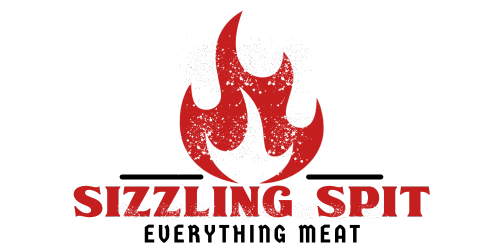Are you curious about the impact of meat consumption on our environment? In today’s world, where the effects of human activities on the planet are increasingly evident, it is important to understand the consequences of our dietary choices. This article explores the environmental impact of meat consumption and sheds light on how our eating habits can contribute to issues such as deforestation, greenhouse gas emissions, and water pollution. Embark on a journey to discover the relationship between our plates and the health of our planet!

Deforestation
Deforestation, the widespread clearing of forests, has a significant impact on the environment. One major contributor to deforestation is livestock grazing. As demand for meat products increases, vast areas of land are converted into grazing pastures for cattle and other livestock. This not only leads to the destruction of natural habitats and the displacement of native species, but it also contributes to the release of greenhouse gases through the loss of carbon stored within the trees.
Cattle ranching is another major driver of deforestation. In regions like the Amazon rainforest, large portions of land are cleared to make way for cattle farming. This not only contributes to deforestation but also leads to the loss of biodiversity as many unique plant and animal species are unable to survive in the newly converted land. Additionally, cattle ranching requires significant amounts of water, further exacerbating issues of water scarcity.
Soybean production, primarily used as animal feed, is also linked to deforestation. In order to meet the growing demand for meat, vast areas of land are cleared for soybean cultivation. This further contributes to deforestation and the destruction of important ecosystems, such as the Amazon rainforest. The loss of these forests not only impacts biodiversity but also disrupts the delicate balance of carbon dioxide absorption and oxygen production, leading to increased greenhouse gas emissions.
Greenhouse Gas Emissions
Livestock production, specifically cattle farming, is a significant contributor to greenhouse gas emissions. Enteric fermentation, the digestive process in cows, leads to the release of methane, a potent greenhouse gas that is significantly more effective at trapping heat in the atmosphere than carbon dioxide. Additionally, manure management, specifically the decomposition of animal waste, also produces methane.
Deforestation and land use change associated with livestock farming also contribute to greenhouse gas emissions. When trees are cleared for grazing or to make way for crops like soybeans, the stored carbon in those trees is released into the atmosphere as carbon dioxide. This, coupled with the loss of carbon-absorbing vegetation, further contributes to the rise in greenhouse gas concentrations.
The transportation and processing of livestock products also have an environmental impact. The transportation of animals and feed over long distances results in the burning of fossil fuels, leading to the release of carbon dioxide and other greenhouse gases. Additionally, the processing of meat products requires energy, further contributing to greenhouse gas emissions.

Water Pollution
One of the significant environmental impacts of meat consumption is water pollution. Manure runoff from livestock operations can contaminate nearby water sources. When manure is not properly managed or treated, it can leach into rivers, lakes, and groundwater, leading to the pollution of these valuable water resources. The presence of excessive nutrients, such as nitrogen and phosphorus, from the manure can cause harmful algae blooms, deplete oxygen levels, and disrupt aquatic ecosystems.
Chemical fertilizers used in feed crop production also contribute to water pollution. These fertilizers often contain nitrogen and phosphorus compounds that can runoff into bodies of water, causing similar negative effects as manure runoff. The excessive nutrient levels in water bodies can harm aquatic life and create dead zones where oxygen is depleted, leading to the loss of marine species.
Processing wastes from meat production plants can also contribute to water pollution. The disposal of wastewater containing high levels of organic matter and other contaminants can lead to the contamination of water sources if not adequately treated. This can further exacerbate the impact of meat consumption on water resources and aquatic ecosystems.
Water Scarcity
Meat production places a significant strain on water resources, contributing to water scarcity in many regions. Irrigation for feed crops, such as soybeans and corn, requires large amounts of water to sustain their growth. This places a strain on available freshwater resources, especially in areas already experiencing water scarcity or drought. As meat consumption continues to rise, the demand for feed crops also increases, further exacerbating water scarcity issues.
Drinking water for livestock is another factor contributing to water scarcity. Cattle and other livestock require substantial amounts of water for hydration and maintaining their overall health. The increase in meat production directly translates to an increase in the demand for drinking water for livestock, placing additional strain on water resources.
The growing demand for meat also competes with the agricultural sector for water resources. As limited water supplies are allocated for livestock farming, less water remains available for crop irrigation and other agricultural activities. This competition for water resources can result in reduced crop yields, decreased food production, and potential food security challenges.

Biodiversity Loss
Meat consumption has been closely linked to biodiversity loss, particularly through habitat destruction. As land is cleared for livestock grazing, natural habitats are destroyed, and native species are displaced or unable to survive in the transformed landscape. Biodiversity is essential for a healthy and functioning ecosystem, and its loss can have far-reaching consequences.
Habitat destruction caused by meat production can lead to species extinction. The loss of natural habitats and the disruption of ecosystems directly impact the survival of many plant and animal species. From insects to large mammals, countless species are at risk of extinction due to the destruction of their habitats for livestock farming.
Moreover, the introduction of invasive species is another concern associated with meat production. As livestock farming expands into new regions, non-native species can be inadvertently introduced. These invasive species can outcompete native species for resources, disrupt ecosystems, and displace native fauna and flora.
Land Degradation
The intensive livestock production practices associated with meat consumption contribute to land degradation. Overgrazing, a result of the large number of livestock being reared for meat, can lead to the degradation of grasslands and other ecosystems. When animals consume too much vegetation, grasses and other plants may not have enough time to recover, resulting in soil degradation and reduced biodiversity.
Soil erosion is another consequence of meat production. Overgrazing and improper land management practices can lead to soil erosion, where topsoil is washed or blown away. Soil erosion not only decreases the fertility of the land but also leads to sedimentation in water bodies, causing further pollution and ecosystem disruption.
The use of chemical pesticides and fertilizers in feed crop production contributes to chemical pollution and land degradation. These chemicals, when improperly used or mismanaged, can accumulate in the soil, affecting soil health and degrading the land over time.
Energy Consumption
Meat production requires significant energy inputs throughout its various stages. The production of animal feed, such as growing and harvesting crops like soybeans and corn, requires energy in the form of fuel, electricity, and water. Additionally, transportation of feed over long distances and the rearing of livestock themselves also consume energy.
Transportation plays a crucial role in the energy consumption associated with meat consumption. Moving livestock from farm to slaughterhouse, transporting feed from fields to feed mills, and then distributing the final meat products to markets all require the use of fossil fuels, contributing to greenhouse gas emissions and climate change.
Food processing, including the packaging, refrigeration, and cooking of meat products, also requires energy. The industrial processing of meat uses large amounts of electricity, contributing to overall energy consumption and environmental impact.
Waste Generation
The production and consumption of meat generate significant amounts of waste, contributing to environmental problems. Animal carcasses, a byproduct of the meat industry, require proper disposal. If not appropriately managed, these carcasses can contribute to pollution and potential health hazards by contaminating soil and water sources.
Food packaging waste is another issue associated with meat consumption. The packaging used to store and transport meat products, such as plastic containers, Styrofoam trays, and plastic wrap, can contribute to marine pollution and landfills if not properly disposed of or recycled.
Processing waste from meat production plants is also a concern. The disposal of waste materials, such as blood, fat, and other organics, can lead to environmental pollution if not appropriately treated or managed. Proper waste management systems are essential to minimize the impact of meat production on the environment.
Antibiotic Resistance
The excessive use of antibiotics in meat production is a significant concern, contributing to antibiotic resistance. To promote growth and prevent diseases, antibiotics are often administered to livestock. However, this widespread use of antibiotics, especially when not appropriately regulated, can lead to the development of antibiotic-resistant bacteria.
The spread of antibiotic-resistant bacteria is another consequence of meat consumption. When consumers are exposed to meat contaminated with antibiotic-resistant bacteria, they are at an increased risk of infections that are difficult to treat. This poses significant health implications and creates challenges for medical professionals in treating bacterial infections.
The implications of antibiotic resistance extend beyond human health. Antibiotic-resistant bacteria can spread through environmental pathways, contaminating soil, water, and ecosystems. This contributes to the overall rise in antibiotic resistance and makes the treatment of bacterial infections in both humans and animals increasingly challenging.
Conclusion
The environmental impacts of meat consumption are broad and far-reaching. It is essential to recognize the need for sustainable alternatives to meat production and consumption. Transitioning to plant-based diets or adopting more responsible meat consumption practices can significantly reduce the environmental burden associated with meat.
Both individual and global responsibility play a crucial role in mitigating the environmental impacts of meat consumption. As individuals, we can make conscious choices to reduce meat consumption, support sustainably sourced and produced meat, and advocate for policies that prioritize environmental conservation. Additionally, collaboration between governments, industries, and consumers is vital in driving systemic change and promoting sustainable practices throughout the entire meat production and consumption chain. By working together, we can protect our environment, conserve biodiversity, and ensure a healthier and more sustainable future for all.


